Prevention
Dental prophylaxis aims to prevent diseases of the teeth and periodontium (tissues surrounding the teeth).
Professional hygienic procedures aim at improving the aesthetics, but first of all at strengthening your teeth.
We can count on success in this area by supplementing home prophylaxis (oral hygiene) with professional dental assistance. Systematic check-ups give the patient and the dentist control over the condition of the oral cavity, which results in a beautiful and healthy smile.
In our office, we place particular emphasis on prevention and health promotion by educating small and adult patients on oral hygiene. Apart from choosing the method of brushing, hygienic measures and changing bad hygienic habits, we will adjust an individual oral cavity prophylaxis plan.
As soon as teeth erupt, dental deposits appear on their surface. They can also form on fillings and various types of prosthetic and orthodontic appliances in the oral cavity.
Which deposits do we distinguish?
-
Which deposits do we distinguish?
- acquired tooth sheath
- plaque (bacterial)
- white tarnish
- food residues
-
Mineralised deposits:
- tartar
If the soft deposits are not removed, in this case the bacterial plaque, after 24 hours becomes mineralized and transforms into tartar. The process of calcification (mineralization) is nothing else than saturation of the plaque with minerals from saliva.
The factors that influence the composition and structure of the plaque are: bacteria, diet, saliva composition, anatomical conditions,
the cleaning action of the tongue and cheeks and hygienic practices.
Scaling
“Scaling”- is a procedure of physical removal of deposits from the surface of teeth especially bacterial plaque and tartar using an ultrasonic dental scaler.
Tartar
Tartar is a hard mineralized layer of plaque. Depending on the location on the surface of the teeth, one can distinguish between supragingival and subgingival calculus, which is the cause of periodontal inflammation. The presence of tartar is connected with creating retention places for bacterial plaque, which easily accumulates on such uneven surfaces. Tartar creates retention for bacterial plaque, The presence of both soft and hard deposits can lead to more serious problems, including tooth loss, gum disease and inflammation (periodontitis) and bone atrophy resulting in the exposure of tooth roots and loosening of the teeth.

How can you tell if your teeth are covered in tartar?
Unlike plaque, which is a colourless layer of bacteria, tartar is a mineral deposit that is visible to the eye and forms above the gum line. The most common sign of tartar is a yellow or brown colour of the teeth or gums. The only way to identify tartar build-up and remove it is to visit your dentist.
Can the formation of tartar be prevented?
Plaque and calculus build-up can be minimised by proper brushing, flossing, rinsing and regular mechanical removal during scaling.
Tartar is removed in the process known as scaling. In our office we use the ultrasonic method of Swiss company EMSa in case of people who are likely to have pacemaker interference of manual instruments such as sickles or curettes. Scaling should be performed 1-2 times a year, and in case of the existence of inflammatory lesions of the gums 3-6 times a year.
For what purpose do we carry out scaling?
The aim of supragingival and subgingival scaling is to remove deposits, leaving a smooth and polished surface and to remove factors that irritate the root surface.

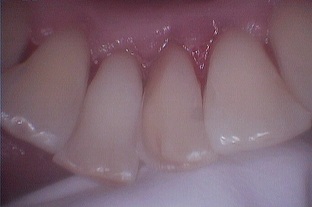
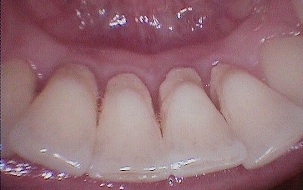

Sandblasting
-
In prevention, sandblasting achieves three main objectives:
- remove superficial discolorations that are difficult to remove with a scaler; Remove superficial discolorations that are difficult to remove with a scaler;
- smoothen the surface of the teeth after the procedure of removing deposits (scaling), which slows down the re-deposition of bacterial plaque and tartar;
- remove bacterial colonies from areas with no or very low amounts of non-mineralised dental deposits, as well as from the surface of implants, where the use of metal instruments for manual or ultrasonic deposit removal is contraindicated.
How is it done?
The sandblaster emits a pressurised stream of water with added cleaning particles (sodium bicarbonate) and air, which mechanically clean the tooth surface. Powders in the following flavours are available in our office: orange, cherry, berry, coca-cola, mint and neutral.
The treatment consists in systematic cleaning of all visible surfaces and hard to reach places of each tooth. The treatment is practically painless and takes about 30 minutes. We protect your mouth with vaseline, we put on protective glasses and a face cloth.
In our office cleaning procedures are performed by a certified dental hygienist.
How often should I sand my teeth?
The standard cleansing procedure is performed once every 6-12 months.
People who consume large amounts of coffee, tea, red wine and paper smokers should report up to every 4 months.

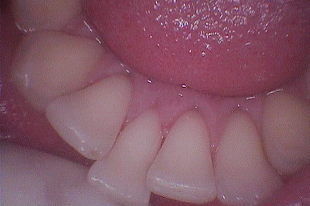
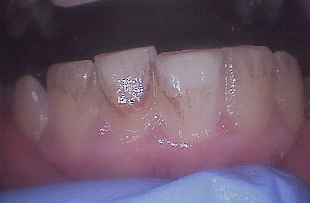
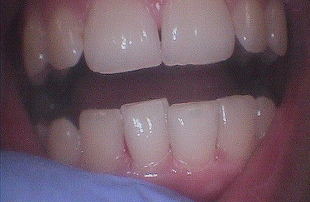




sealing
Teeth sealing is a painless procedure and our little patients become convinced,
that a visit to the dentist can be stress-free and thus pleasant and rewarded with adult recognition. Every little patient gets a present for their courage.
Fissure sealing consists in filling in fissures on the chewing surfaces of permanent teeth with a liquid material. Tooth sealing guarantees isolation of teeth from food debris and bacterial plaque. It is particularly important in the case of fissures of premolars and molars whose self-cleaning is often difficult and hygiene insufficient due to the young age of the patient and poor manual skills.
In addition, at the bottom of the fissure the thickness of the enamel is negligible, so food debris left behind very quickly causes demineralization and consequently decay. It is recommended to seal fissures 4 months after the tooth eruption. Checks of the fissures should be carried out every 3-6 months to replenish them if necessary. Children have immature permanent teeth so it is most important that the sealant lasts for the first two years until the teeth finally mature. Teeth that are healthy and free of decay should be sealed.
In any other case, the sealant will be lost quickly and caries will develop, or a small cavity will form under the surface of the sealant, which is an unfavourable situation and there is a risk of a deep cavity developing soon.
In our office we use liquid, transparent fluoride-releasing composites with increased mechanical strength compared to sealants, which ensures more reliable protection and tightness of such tooth protection. This also guarantees better control and aesthetics of the fissure filling.
Properly performed tooth sealing procedure guarantees approx. 90-100% elimination of caries on the chewing surfaces.
A special case of fissure sealing is tooth sealing with fissure widening. This takes place in teeth where caries has already started. The procedure consists in gentle opening of the fissure, usually with the use of an abrasive sandblaster, widening and sealing of the tooth.


